Cantor Arts Center
328 Lomita Drive at Museum Way
Stanford, CA 94305-5060
Phone: 650-723-4177
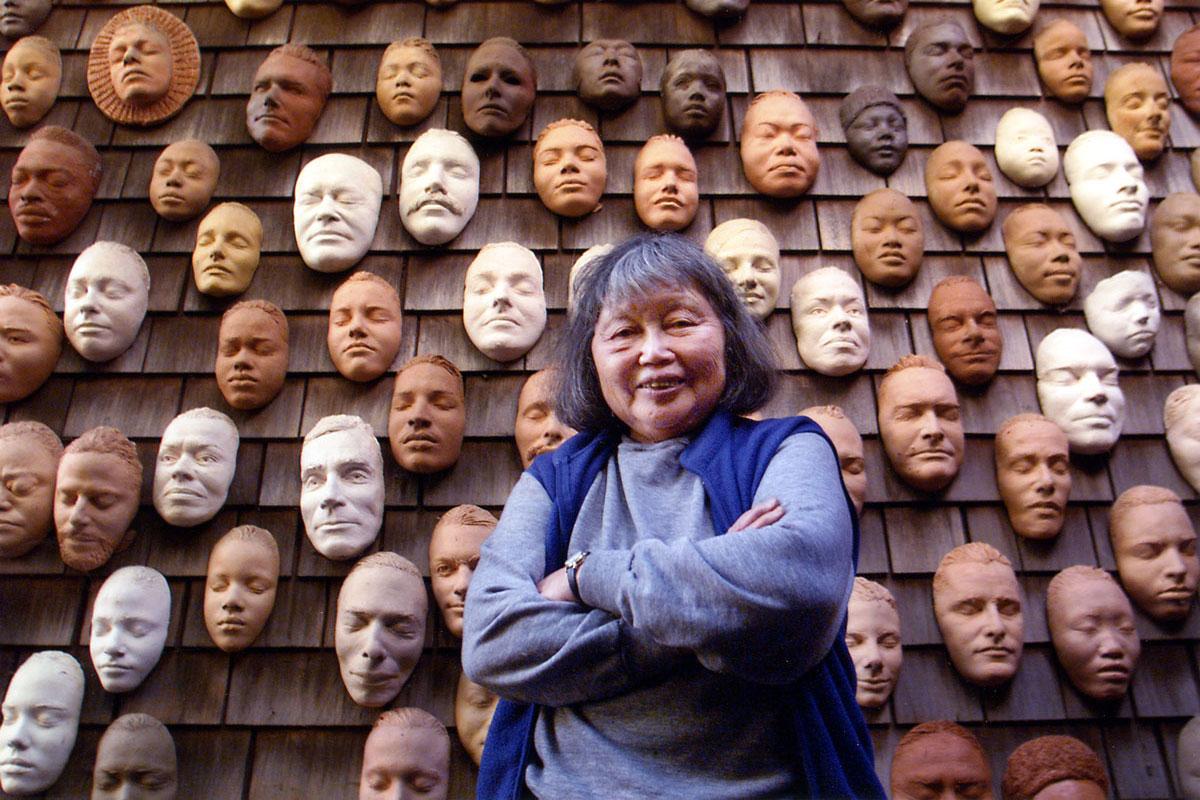
Ruth Asawa with life masks on the exterior wall of her house. Photography by Terry Schmitt. ARTWORK: Untitled (LC.012 Wall of Masks), c. 1966–2000. Ceramic, bisque-fired clay. Courtesy David Zwirner. Cantor Arts Center, Stanford University. William Alden Campbell and Martha Campbell Art Acquisition Fund, 2020.172.1–233 © 2022 Ruth Asawa Lanier, Inc. / Artists Rights Society (ARS), New York
The Cantor Arts Center at Stanford University acquired Untitled (LC.012, Wall of Masks) in 2020. These 233 masks, which originally hung on the exterior of Ruth Asawa’s family home in Noe Valley, have never been shown in their entirety outside their original context. After two years of conservation treatment and careful planning, they were mounted as part of the long-term installation, The Faces of Ruth Asawa, at the Cantor.This focused exhibition, curated by Aleesa Pitchamarn Alexander, PhD, Robert M. and Ruth L. Halperin Associate Curator of Modern and Contemporary Art and co-director of the Asian American Art Initiative, explores Asawa’s intimate relationship with clay and offers a new context with which to understand her diverse body of work.
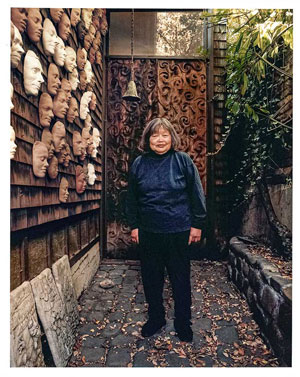
Ruth Asawa (1926–2013) was a Japanese American artist, educator, and arts advocate primarily active in San Francisco, California. Born to immigrant parents in Norwalk, California, she and her family were among 120,000 Japanese Americans forcibly incarcerated under Executive Order 9066 in 1942. Introduced as a 16-year-old to professional Disney artists who were also imprisoned, Asawa’s early interest in art survived these horrible circumstances. Upon her release, she enrolled in Milwaukee State Teachers College, intending to pursue a career as an art instructor, but she was not allowed to complete her degree due to racial discrimination. In 1946, Asawa joined as a student at Black Mountain College, the avant-garde liberal arts college in North Carolina. Asawa studied with Josef Albers and Buckminster Fuller during this formative artistic period and met her future spouse Albert Lanier.
Asawa is best known for her sinuous wire sculptures that she began making while studying at Black Mountain College. In 1947, Asawa went to Toluca, Mexico, where she learned how to crochet wire from local artists who used the technique to create baskets. With this technique, Asawa went on to create a complex body of sculpture that challenged conventions of the genre during the mid-twentieth century. After Asawa and Lanier moved to San Francisco in 1949, they became parents to six children and active community members in the Bay Area. As an arts activist, Asawa co-founded the public high school, the Ruth Asawa San Francisco School of the Arts, and served as an influential member of the San Francisco Arts Commission and California Arts Council, among other undertakings.
Alongside her public and personal engagements, Asawa always made art, expanding the range of her wire sculptures as well as working in other media. Artistically, her practice is marked by an interest in exploring the aesthetic possibilities of repetitive gestures—wire looping, line drawing, paper-folding, etc. She modeled an artist’s life that blended rigorous artistic practice with community outreach and familial devotion with professional ambition, all driven by a fervent belief in art’s capacity to effect change. For this longtime arts advocate and leader in the greater Bay Area, conversations about modernism and aesthetics were inextricable from discussions of arts accessibility and education. A creative spirit with a deep sense of personal integrity, Asawa tirelessly worked to help others understand the primacy of art in creating a brighter world for future generations.
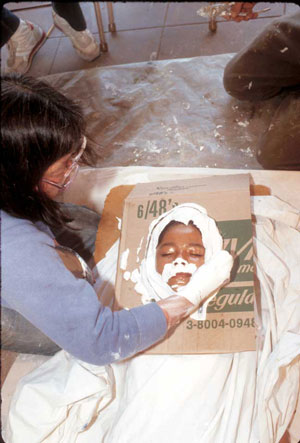 Though primarily known for her hanging biomorphic wire sculptures, Asawa was an artist of diverse talents and interests. In addition to wire, she worked with paper, bronze, wood, clay, and other materials. This installation highlights her longstanding relationship with clay, which she principally engaged with through mask-making. For more than 30 years, Asawa made a practice of casting the faces of friends, students, family members, and community members. To make the masks, she would first apply petroleum jelly to a sitter’s face to prevent adhesion. She then applied plaster in layers, taking special care around the eyes, nose, and hairline. After allowing it to set for around five minutes, Asawa carefully removed the mold and let it harden. Using this plaster mold, she created a clay positive that was then fired, thus completing the mask-making process.
Though primarily known for her hanging biomorphic wire sculptures, Asawa was an artist of diverse talents and interests. In addition to wire, she worked with paper, bronze, wood, clay, and other materials. This installation highlights her longstanding relationship with clay, which she principally engaged with through mask-making. For more than 30 years, Asawa made a practice of casting the faces of friends, students, family members, and community members. To make the masks, she would first apply petroleum jelly to a sitter’s face to prevent adhesion. She then applied plaster in layers, taking special care around the eyes, nose, and hairline. After allowing it to set for around five minutes, Asawa carefully removed the mold and let it harden. Using this plaster mold, she created a clay positive that was then fired, thus completing the mask-making process.
Asawa became interested in mask-making after reading a 1966 Life magazine article on Roman portraiture. She learned the technique of casting faces from a public-school art teacher that same year. Her first masks were fired by friends who were ceramic artists. In 1980 her son, Paul Lanier, who later assisted and fired many of the masks, improved her casting technique, and Asawa continued making masks until 2000. She created more than 400 individual masks in her lifetime and often produced duplicates so she could keep one and give one to the sitter.
Far from a solitary artist, Asawa had a large family and a broad social circle. She cast the faces of local legends, including business magnate Cyril Magnin, and fellow artists Gwendolyn Knight and Trude Guermonprez—both of whom she had met while studying at Black Mountain College. She also captured many of her students’ faces and those of her children and grandchildren at various stages of their lives. The masks were placed on the wall with no overarching plan or pattern of arrangement, generating unexpected connections between sitters. Untitled (LC. 012, Wall of Masks) is considered a single art object composed of 233 individual ceramic face masks. Asawa originally hung these masks on the exterior entryway of her Noe Valley home, next to the front doors that she had hand-carved from slabs of redwood. To visit Ruth Asawa’s home was to encounter a visual archive of the people she interacted with throughout her life. Looking at these faces, we are offered an intimate glimpse of Asawa’s democratic vision of the world, where anyone could become a work of art.
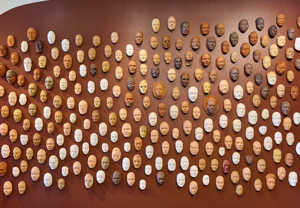 Listen to the audio tour exploring the ongoing installation The Faces of Ruth Asawa produced by the Ruth Asawa Foundation.
Listen to the audio tour exploring the ongoing installation The Faces of Ruth Asawa produced by the Ruth Asawa Foundation.
A written transcript of the audio tour is also available for download:
Below you can find a series of groupings with masks of interest from the installation on view at the Cantor Arts Center.
The Cantor is open to the public, Wednesdays–Sundays 11:00 a.m.–5:00 p.m. We’re always free. Advance registration is not required, but it helps us plan if we know who's coming.
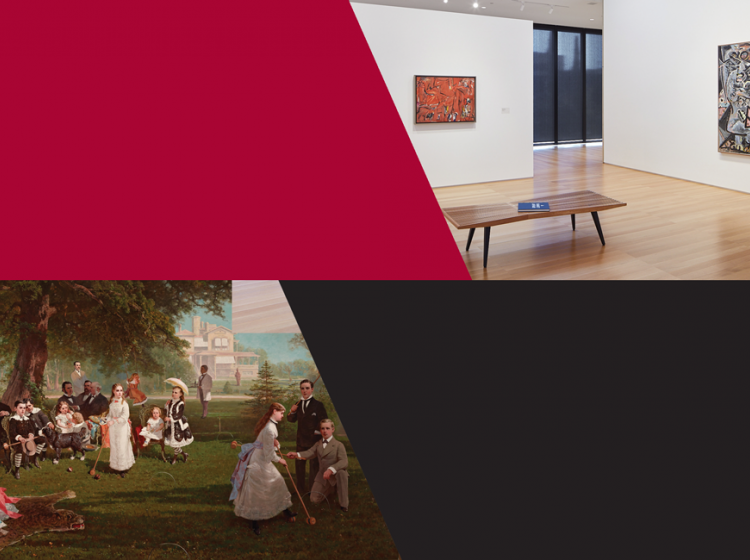
The Cantor Arts Center is located at the intersection of Museum Way and Lomita Drive in the heart of the arts district on the Stanford campus. The Cantor faces the Bing Concert Hall across Palm Drive, northwest of The Oval and the Main Quad.
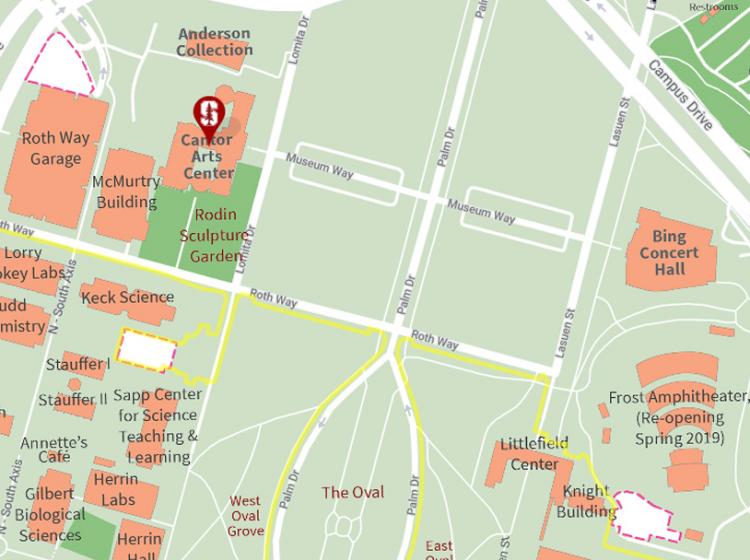
Parking is limited. Stanford has a new contactless process to pay for parking, using the ParkMobile app, website, or phone. Prior to your visit, we recommend you visit the Stanford Transportation website to learn more about the updated visitor parking process.
